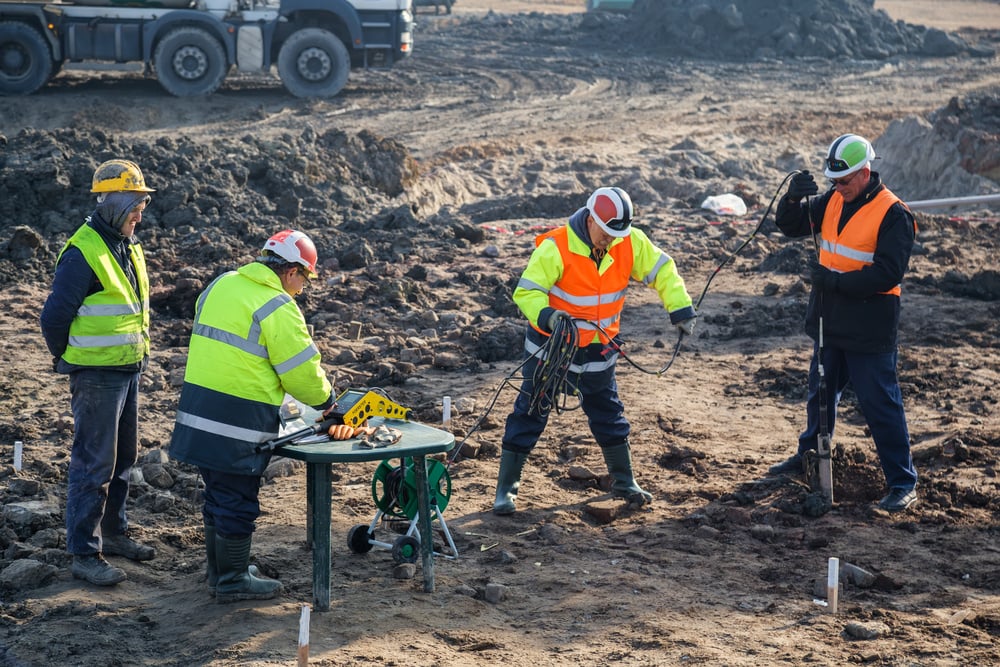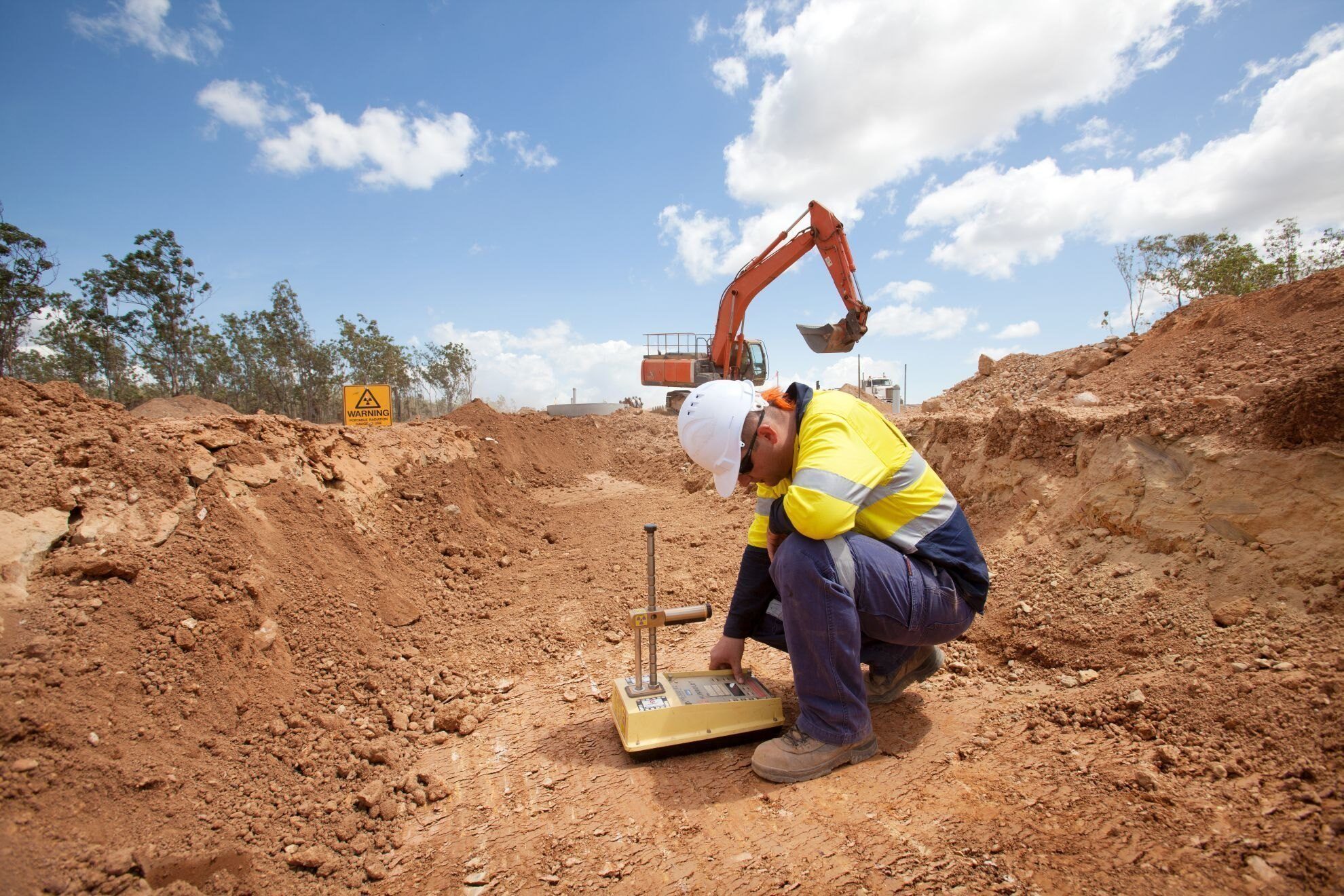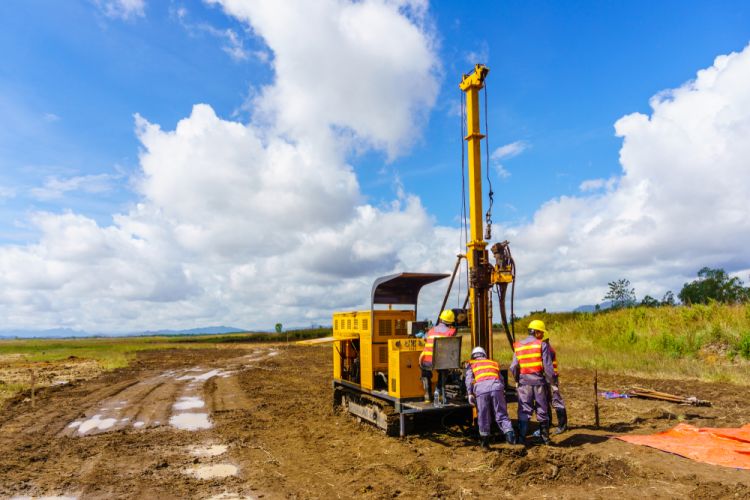The 10-Minute Rule for Geotechnical Engineering For Construction Projects
The 10-Minute Rule for Geotechnical Engineering For Construction Projects
Blog Article
How Geotechnical Engineering For Construction Projects can Save You Time, Stress, and Money.
Table of ContentsThe smart Trick of Geotechnical Engineering For Construction Projects That Nobody is Talking AboutExamine This Report on Geotechnical Engineering For Construction ProjectsAll About Geotechnical Engineering For Construction ProjectsThe 5-Second Trick For Geotechnical Engineering For Construction ProjectsIndicators on Geotechnical Engineering For Construction Projects You Should KnowSome Known Facts About Geotechnical Engineering For Construction Projects.Geotechnical Engineering For Construction Projects for Dummies
and Kovacs, W. (1981 ), An Introduction to Geotechnical Engineering, Prentice-Hall, Inc. Deep Check Tech (2023 ): Deep Scan Tech uncovers covert structures at the website of Denmark's tallest building. "Geofrost Coring". GEOFROST. Recovered 20 November 2020. Han, Jie (2015 ). Principles and Technique of Ground Enhancement. Wiley. ISBN 9781118421307. RAJU, V. R.Ground Renovation Technologies and Situation Histories. Singapore: Study Posting Services. p. 809. ISBN978-981-08-3124-0. Ground Enhancement Concepts And Applications In Asia. Pariseau, William G. (2011 ). Design evaluation in rock mechanics. CRC Press. Hegde, A.M. and Palsule P (Geotechnical Engineering for Construction Projects).S. (2020 ), Efficiency of Geosynthetics Reinforced Subgrade Subjected to Repetitive Vehicle Loads: Experimental and Mathematical Studies.
Cengage Learning, Stamford, 666 p. Atkinson, J., 2007. The auto mechanics of dirts and structures. Taylor & Francis, N.Y., 442 p. Drifting Offshore Wind Generators: Responses in a Sea state Pareto Optimal Designs and Economic Evaluation, P. Sclavounos et al., October 2007. Nicholson, D, Tse, C and Penny, C. (1999 ). The Observational Technique in ground design concepts and applications.
An Unbiased View of Geotechnical Engineering For Construction Projects
Lab and area screening plays an essential function in this process. By extracting examples from the earth's subsurface and using a suite of tests, geotechnical designers can forecast the behavior of dirt layers and assess their viability for different building endeavours. The significance of geotechnical engineering in civil design can not be overstated, attributable to several factors: The preliminary action in any type of geotechnical study includes establishing the dirt kind at the building site.
Recognizing these features guarantees that just suitable soil kinds are picked for the advancement, therefore averting prospective architectural failures. The structure serves as the bedrock of any kind of building job. Selecting the proper structure type is a decision that depends upon the extensive analysis supplied by geotechnical design. This ensures the longevity and stability of structures by suiting the tons they will bear.

Geotechnical site examination is an essential step in the planning and implementation of any type of building job. It includes the collection and evaluation of data connected to the physical buildings of dirt and rock under a recommended building and construction site. This information is vital for the design and construction of safe, steady, and sustainable structures.
The Single Strategy To Use For Geotechnical Engineering For Construction Projects
In this blog, we will certainly dig right into the value of geotechnical site investigation, its numerous components, and just how it benefits building jobs. Geotechnical website investigation, additionally referred to as subsurface exploration, includes a collection of activities intended at identifying the soil, rock, and groundwater problems at a construction website. The primary objectives are to recognize prospective geotechnical hazards, examine the engineering residential or commercial properties of subsurface materials, and supply suggestions for the style and building and construction of foundations, keeping walls, and other structures.
This may include geological maps, aerial photos, previous examination records, and historic information. The workdesk study helps in determining possible geotechnical issues and planning the subsequent fieldwork. Complying with the workdesk research, a website reconnaissance is performed to aesthetically inspect the site and its surroundings. This includes observing the topography, drain patterns, existing frameworks, plants, and any signs of instability or erosion.
Not known Incorrect Statements About Geotechnical Engineering For Construction Projects
Shallow test pits are dug deep into to directly observe and sample the dirt and rock. This technique serves for examining the upper layers read more of the subsurface and identifying near-surface hazards. Non-invasive geophysical approaches, such as seismic refraction, ground-penetrating radar (GPR), news and electric resistivity tomography (ERT), are used to map subsurface conditions and spot abnormalities.
Soil and rock examples gathered throughout the area investigation are subjected to lab screening to determine their physical and mechanical residential or commercial properties. These examinations give important information for geotechnical analysis and design.
The main advantage of geotechnical website examination is ensuring the security and security of frameworks. By recognizing the subsurface conditions, engineers can create structures and various other architectural aspects that can stand up to the tons and ecological pressures they will certainly undergo. This minimizes the danger of negotiation, subsidence, and structural failure.
An Unbiased View of Geotechnical Engineering For Construction Projects
This makes certain effective and secure building practices. Geotechnical site examinations are often needed by developing codes and guidelines.
This information is vital for project supervisors, architects, and service providers in creating reasonable timetables, budgets, and backup plans. Geotechnical Engineering for Construction Projects. Skyscraper in a Coastal AreaIn a coastal city, a skyscraper household building was prepared on a website with suspected loose sand deposits and a high water table. A thorough geotechnical investigation, including borehole boring, CPT, and geophysical studies, was conducted
The 2-Minute Rule for Geotechnical Engineering For Construction Projects
Based on these searchings for, the structure style was modified to consist of deep heap foundations prolonging into secure strata, and ground improvement techniques, such as vibro-compaction, were applied to mitigate liquefaction dangers. This aggressive method made certain the safety and security of the building while preventing pricey click to read more post-construction remediation. Infrastructure Advancement on a Sloping TerrainA significant framework project, involving the construction of a freeway and bridges, was prepared on an uneven terrain with high slopes.

The Leaning Tower of Pisa (Italy), an iconic building wonder, is infamous for its unintended tilt from substantial geotechnical issues. The tower's structure was inadequately made to manage the soft, unstable dirt beneath it, bring about unequal negotiation and its distinctive lean. Our world is populated with impressive facilities projectsfrom looming high-rises to sprawling bridgesall standing statement to the development of the numerous construction devices and techniques readily available.
Geotechnical design is a specific area within civil design that concentrates on examining the habits of planet products. This branch digs deep right into the groundinvestigating just how the soil, rock, and groundwater at a building site can influenceand be affected bythe framework that we put up on and into them. Prior to a single block is laid or a concrete structure poured, geotechnical engineers probe right into the earthgathering essential information regarding the website's soil structure, rock framework, and groundwater levels.
The Facts About Geotechnical Engineering For Construction Projects Revealed

is a tool utilized to analyze the integrity and load-bearing capacity of stacks throughout installation, leveraging the principle of wave proliferation. It maximizes building and construction efficiency by supplying real-time analyses, thus guaranteeing risk-free and effective pile foundations. One of the functional applications of geotechnical design involves making a decision and implementing the right methods for foundation construction.
Pile driving represents greater than the simple act of placing architectural elements into the ground. On the contrary, it is a very carefully managed procedure of moving a structure's tons past the much less steady soil layers closer to the surfacedown to the more substantial strata that lie beneath. When it comes to pile driving, consider how geotechnical engineers expertly utilize this strategy to equally disperse the structure's weight.
Report this page